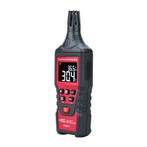How to use a general microscope
1,Low magnification observation
First, the position of the low-magnification objective lens is fixed, then place the specimen piece, turn the reflector, adjust the light, raise the objective lens, adjust downward until the specimen is seen, and then use the fine adjustment to focus for observation. With the exception of a few microscopes, the spotting lens is positioned at the *higher point. If an image of an outside object appears in the field of view, the spotting scope can be lowered slightly and the image can disappear. The iridescent aperture under the spotting scope should be adjusted to the appropriate size to control the amount of incoming light and increase the difference between light and dark.
2,High-magnification observation
Microscopes are generally designed to be confocal. After the low magnification focus, switch to high magnification is basically also focus, as long as a slight rotation can be fine-tuned. Some simple microscopes are not confocal, or due to the replacement of the objective lens and can not reach the confocal point, it is necessary to take the high power objective lens down, and then up to adjust the focus of the method. The iris aperture should be enlarged so that it can form a sufficient light cone angle. Slightly move the spotting scope up and down, and observe whether the image is clear.
3, oil immersion mirror observation
The working distance of the oil immersion mirror is very small, so it is necessary to prevent damage to the carrier film and the lens on the objective lens. When used, it is generally through the low-magnification, high-magnification to the oil immersion mirror. Once the high magnification objective is aligned on the specimen, the oil immersion lens is then used for observation. Slide specimens can also be observed directly with the oil immersion lens without going through the low and high magnification objectives. If the microscope has an automatic stopping device, after adding oil to the slide, move the oil immersion lens down into the oil droplets until it stops falling, and then use the fine adjustment to adjust the focus upwards. If the microscope does not have an automatic stop, the method of focusing is to look at it from the side of the microscope, move the oil immersion mirror down until it comes into slight contact with the slide, and then use the fine adjustment to raise the focus.
When using the oil immersion microscope, the stage should be kept horizontal to prevent the oil from flowing.
The oil used in the oil immersion mirror should be clean, the spotting scope should be raised to the highest point and the iridescent aperture under the spotting scope should be enlarged, otherwise the resolution will be affected by lowering the numerical aperture. Whether oil immersion mirror or high magnification observation, it is appropriate to use an adjustable microscope lamp as a light source.






